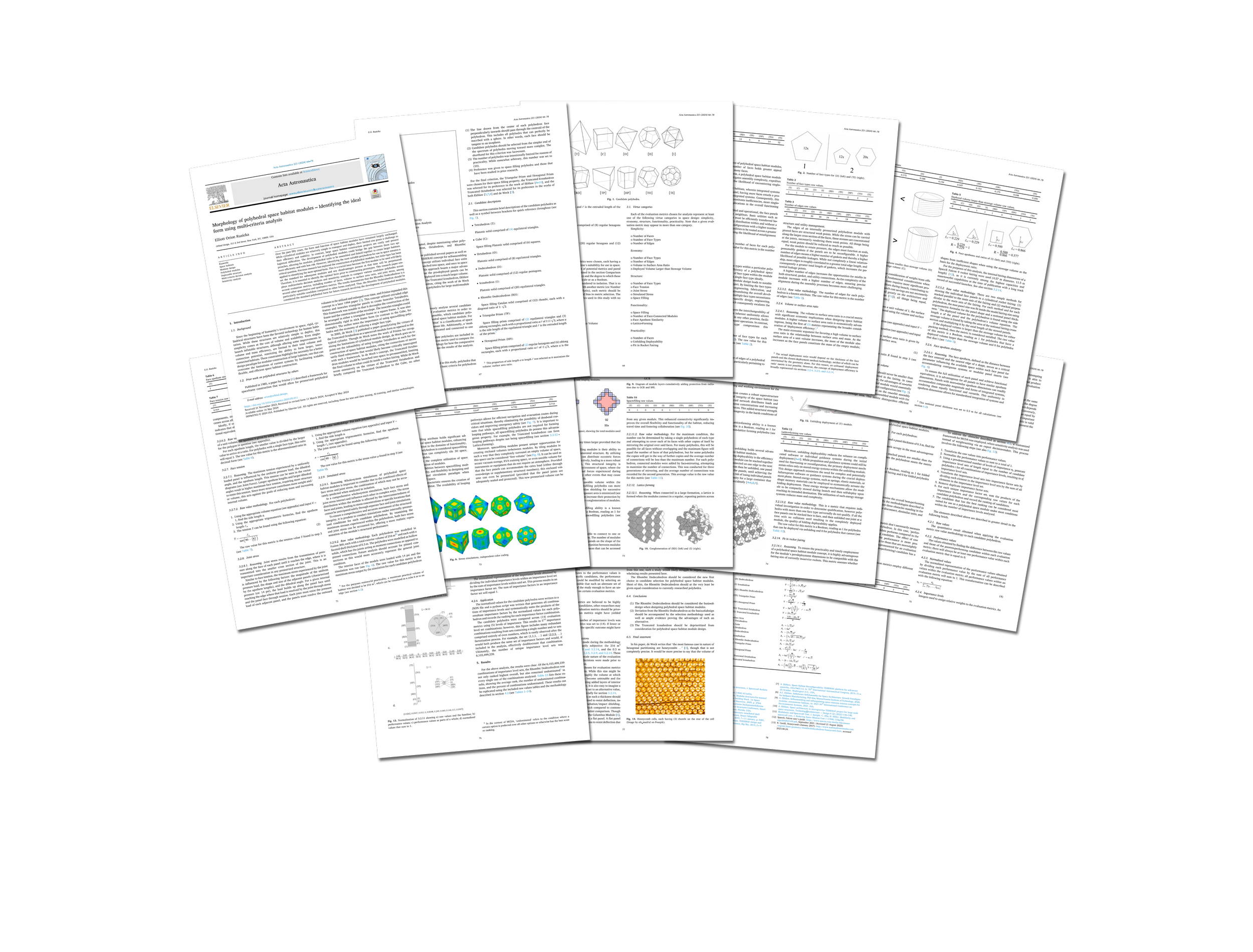
Papers
Academic Papers
Beyond the Limits
Arbitrarily Large Rotating Space Habitats through Structural Decoupling
E. Ruzicka, “Beyond the Limits - Arbitrarily Large Rotating Space Habitats through Structural Decoupling”, IAC-24-D4.IPB.17, 75th International Astronautical Congress, Milan, Italy, 2024, 14 – 18 October.
The Future Unfolds
Simplifying Polyhedral Space Habitat Module Deployment Using a Contiguous Unfolding Method
E. Ruzicka, “The Future Unfolds - Simplifying Polyhedral Space Habitat Module Deployment Using a Contiguous Unfolding Method”, IAC-24-C2.IP.36, 75th International Astronautical Congress, Milan, Italy, 2024, 14 – 18 October.
Morphology of Polyhedral Space Habitat Modules
Identifying the Ideal Form Using Multi-Criteria Analysis
E. Ruzicka, “Morphology of Polyhedral Space Habitat Modules - Identifying the Ideal Form Using Multi-Criteria Analysis”, Acta Astronautica, Volume 221, 2024, Pages 66-78, https://doi.org/10.1016/j.actaastro.2024.05.011.
Morphology of Polyhedral Space Habitat Modules
Identifying the Ideal Form Using Multi-Criteria Analysis
E. Ruzicka, “Morphology of Polyhedral Space Habitat Modules - Identifying the Ideal Form Using Multi-Criteria Analysis”, IAC-23-C2.1.3, 74th International Astronautical Congress, Baku, Azerbaijan, 2023, 2 – 6 October.




